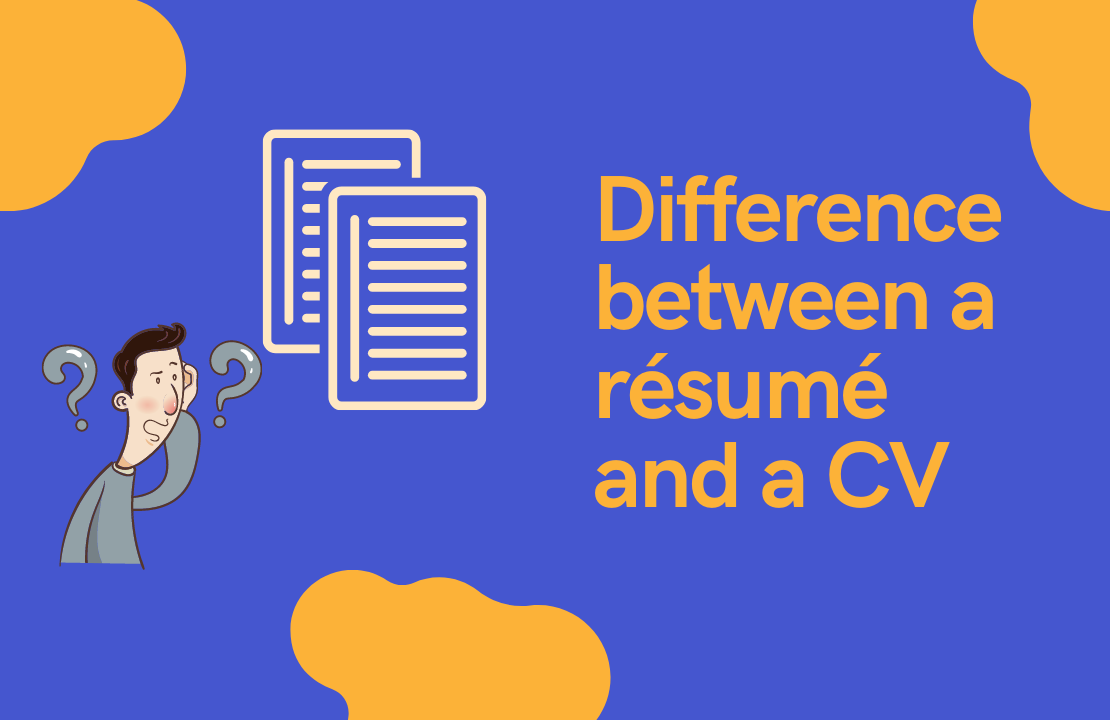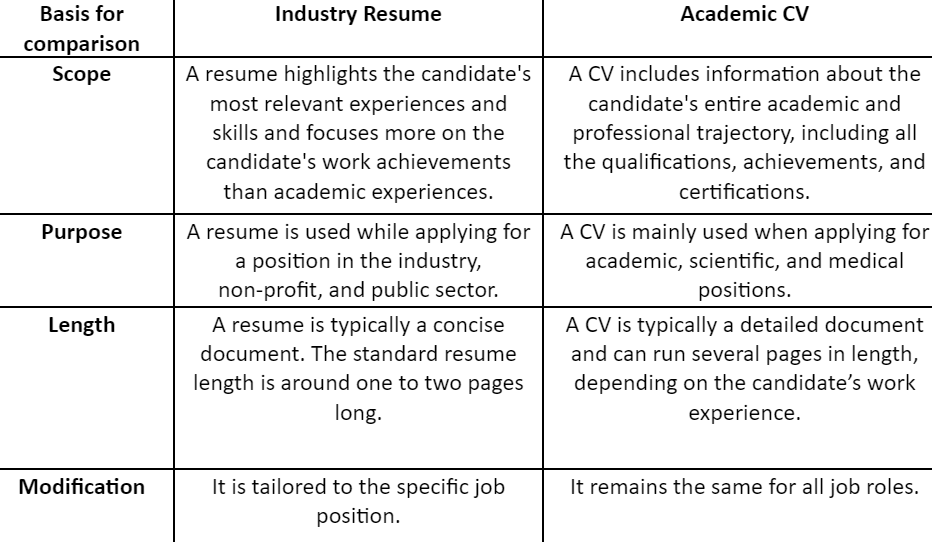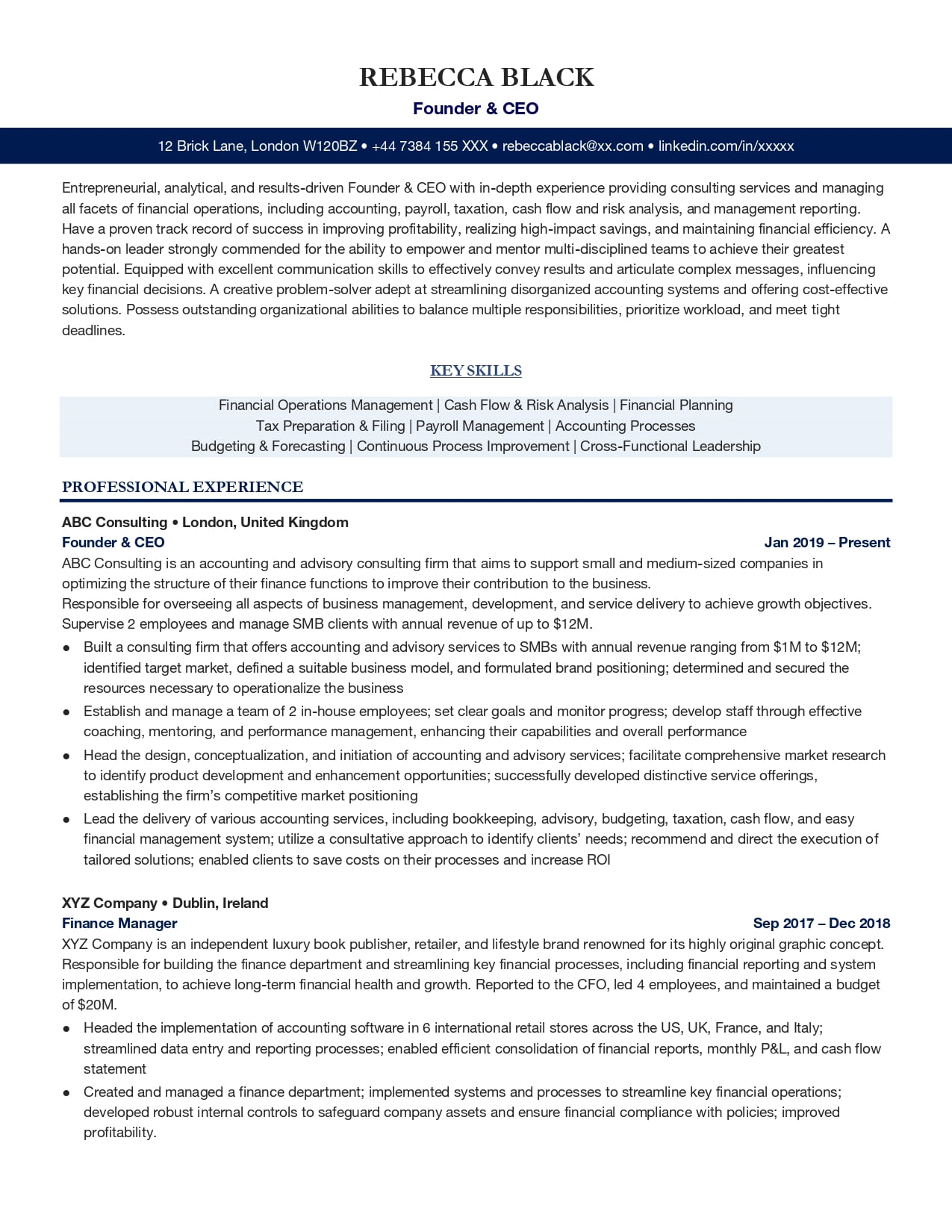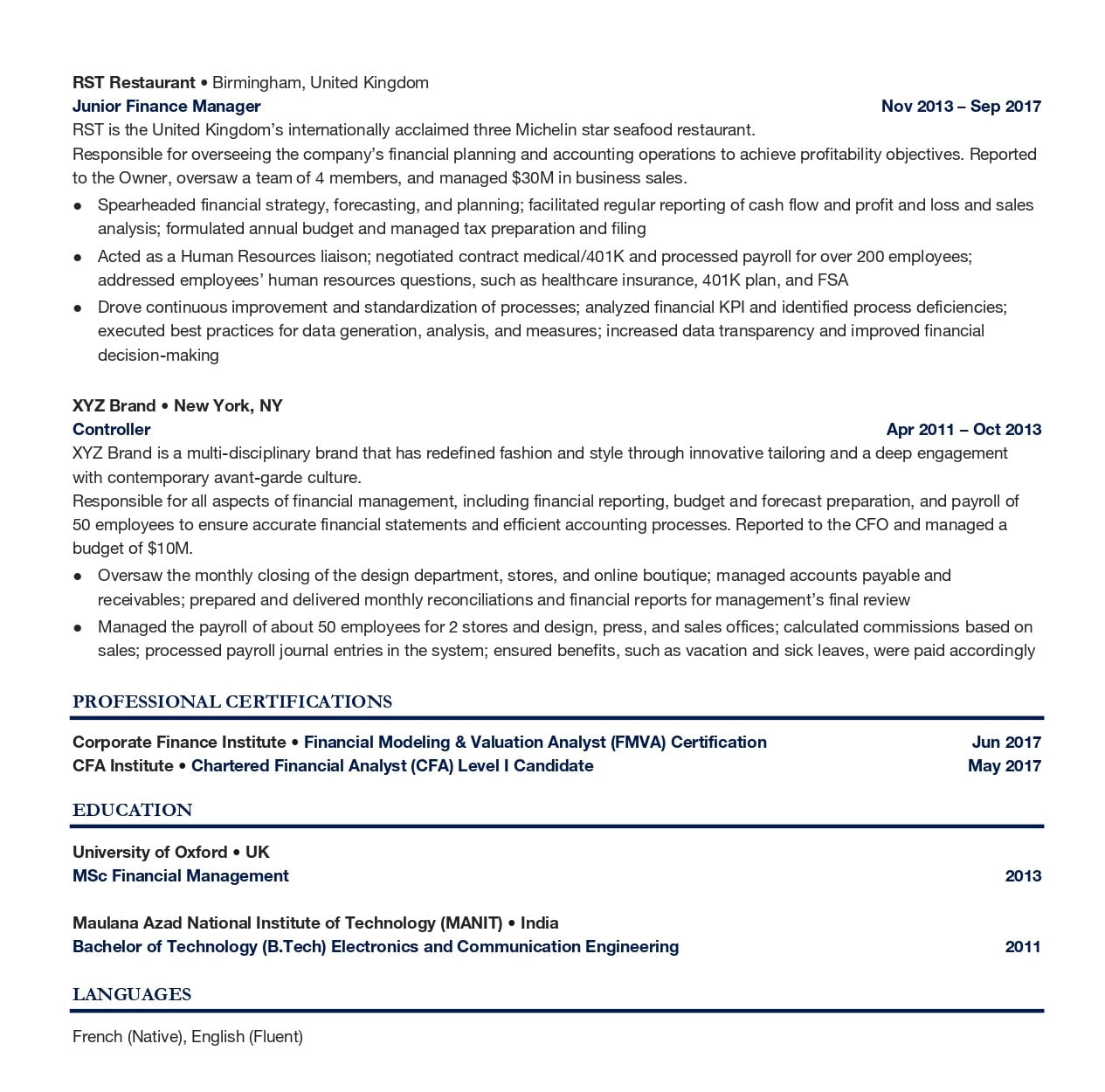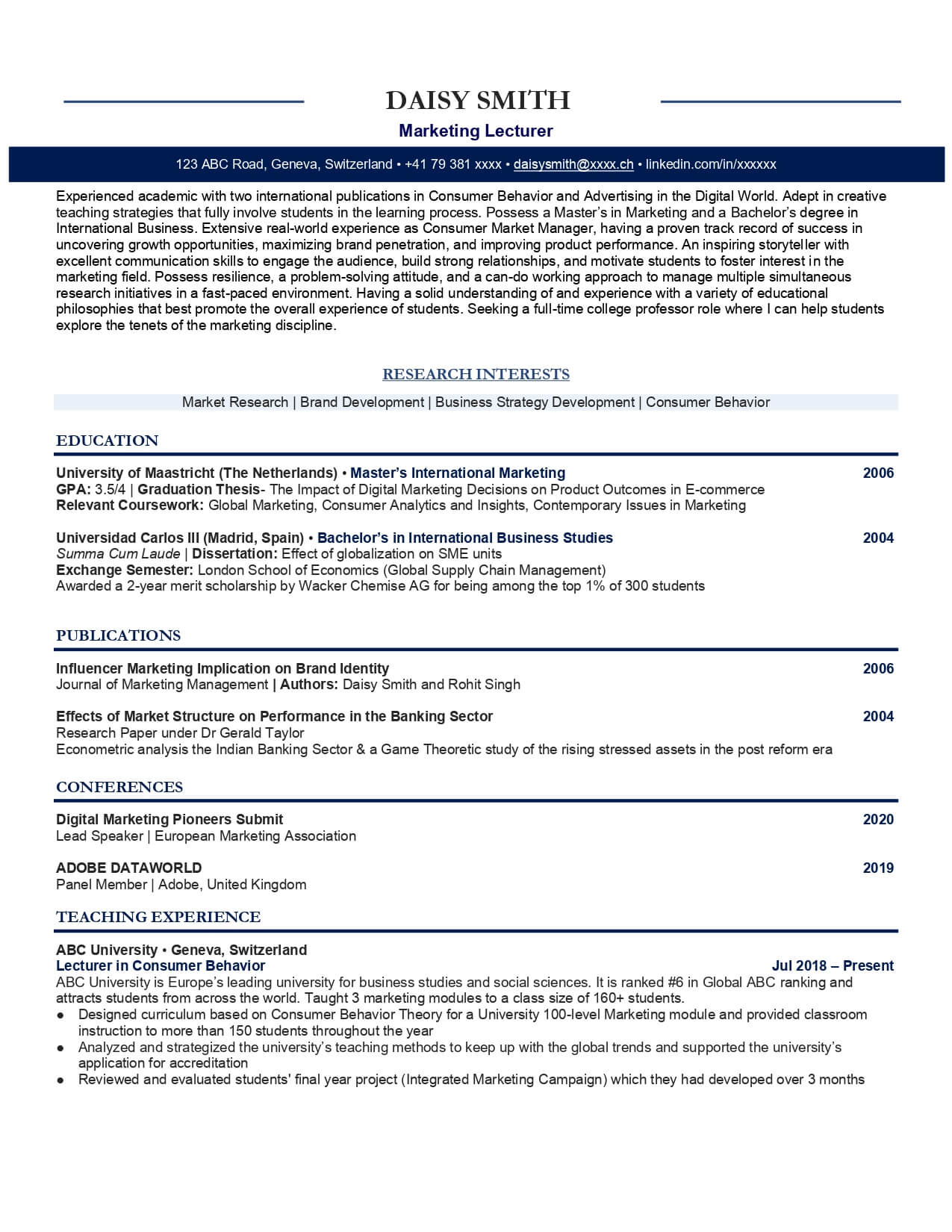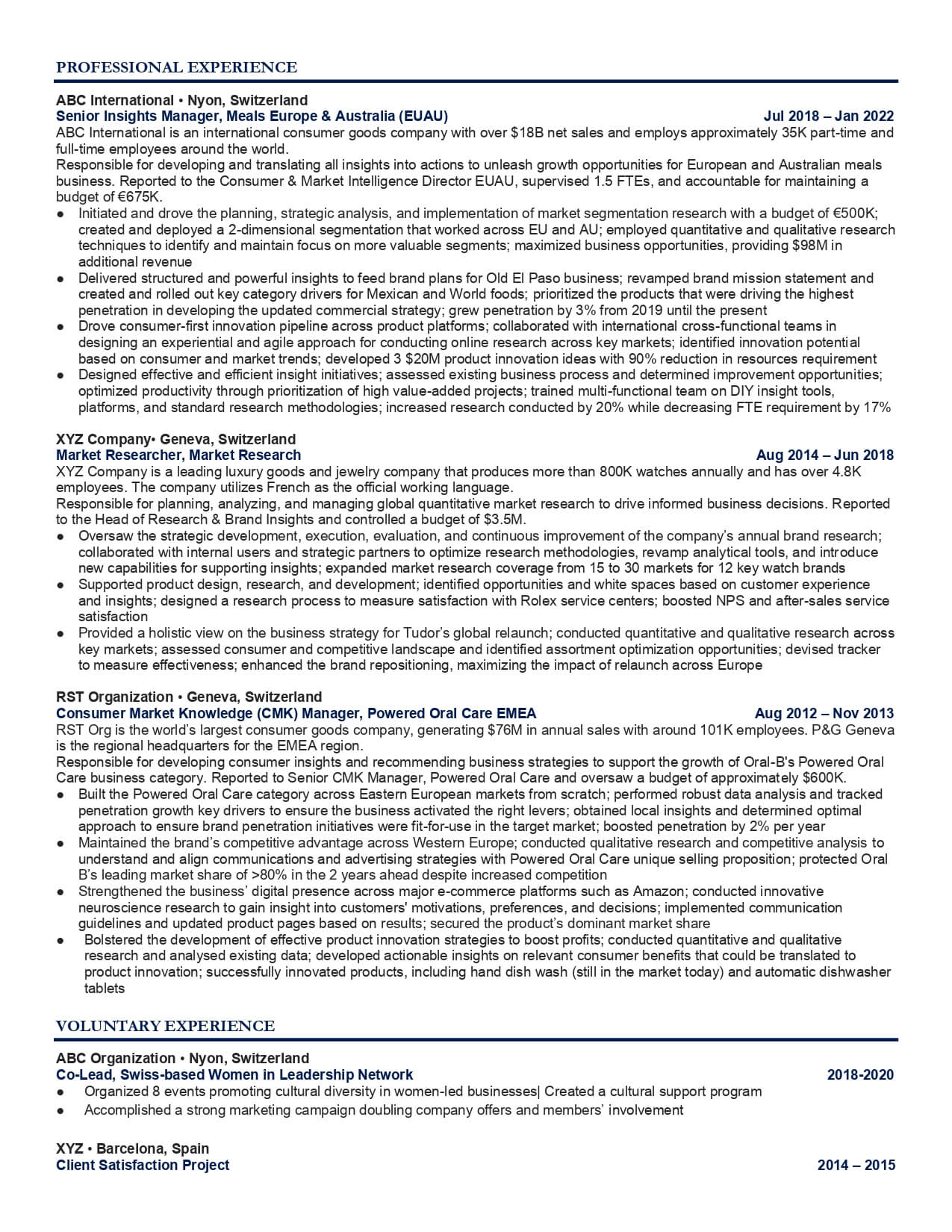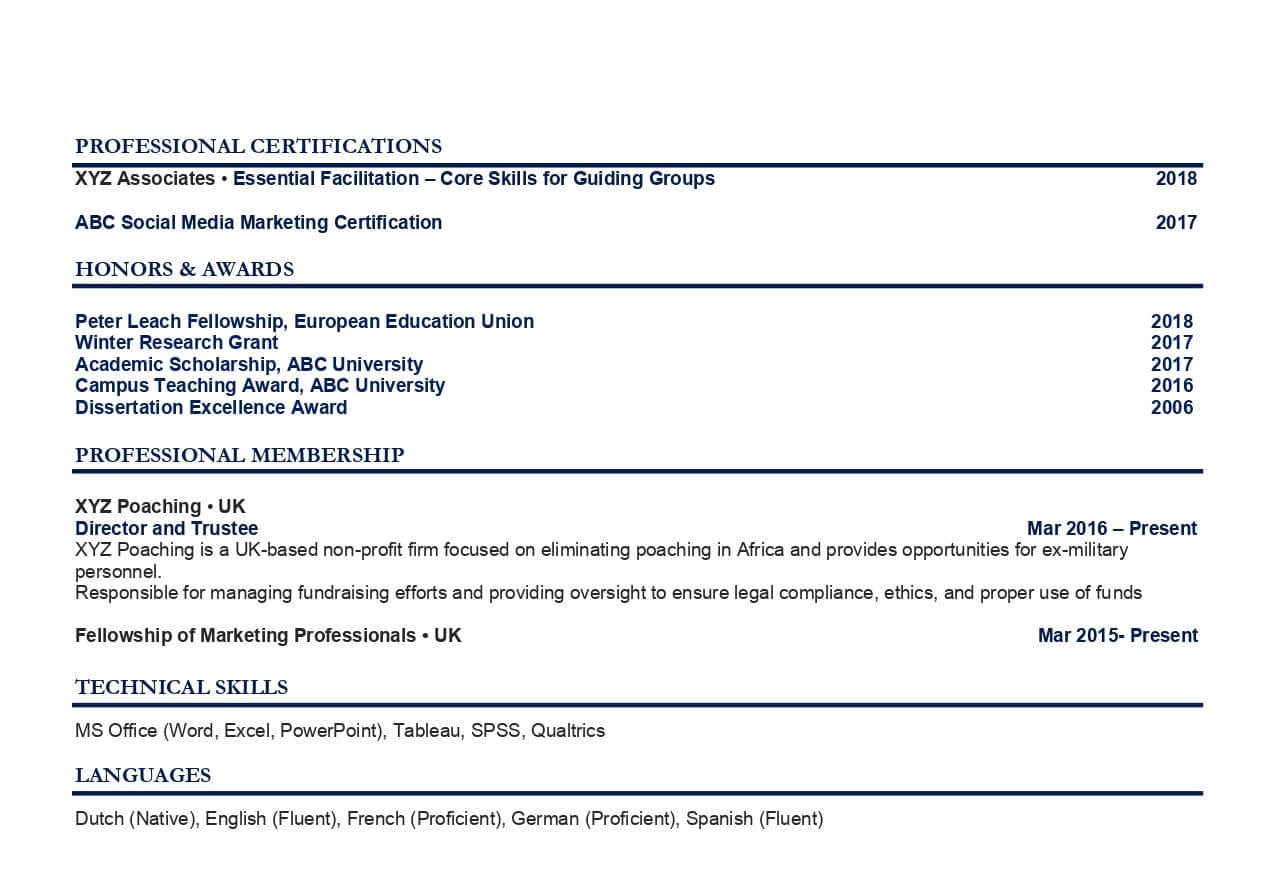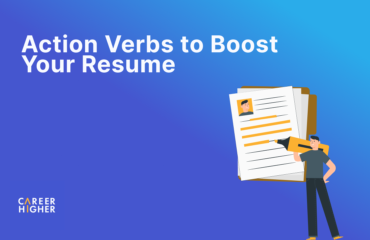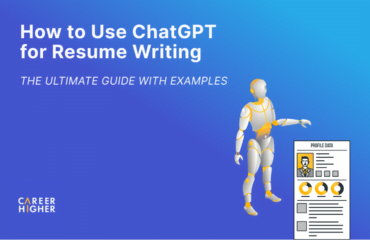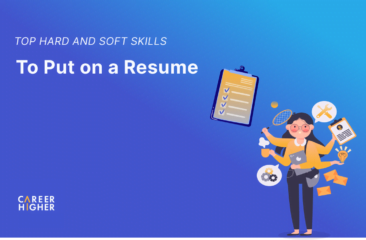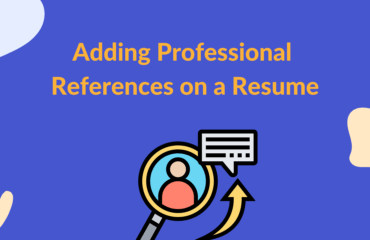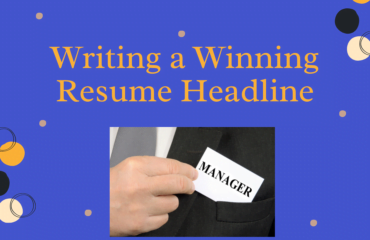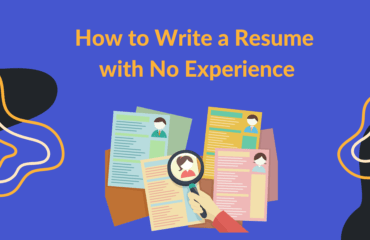Table of Contents
Why do some job postings ask for a Curriculum Vitae (CV), while others for a resume? Aren’t they technically the same thing? Well, in some cases, CV and resume are used interchangeably, while in others, they can mean something completely different. Resume and CV are terms whose meaning changes depending on the location, which can often be confusing. But don’t worry! In this article, you’ll learn everything you need to know about a resume, a CV, and how they vary internationally.
Differences in a nutshell
While a resume and a CV are both used to get you an interview, they are not always interchangeable. On the surface, both documents aim to answer the hiring decision-makers’ fundamental questions- “Who are you?” and “Why do you deserve this position?” But, they both adopt a different approach when answering these questions. The main differences between an industry resume and an academic CV lie in their scope, purpose, and length. Here is a summarized overview of how a resume and a CV differ:
Resume vs. CV: How do they differ geographically?
While writing your resume or CV, remember that employers in certain countries may have different expectations. It is, therefore, critical to know what employers in your region are looking for. Let’s understand how a resume and CV vary in different geographies:
North America
In the US and Canada, résumé is a term used to describe a document whose purpose is to apply to a job in the industry. This document is 1 – 2 pages long (usually 1 page) and should be laser-focused on the target job. On the contrary, a CV is a document used to apply for a position in academia. The length of the document depends on the applicant’s background. Research, teaching, and education are analyzed in detail, while industry experience is considered irrelevant in most cases.
Europe
Europeans don’t use the term résumé. The term CV is used to describe the documents created for roles in the industry and those used for applications in academia. Nevertheless, a CV targeted to a business differs from one targeted to an academic institution.
CVs targeted to the industry are 1 – 2 pages long. While North American résumés should be one-pagers, if possible, European CVs are usually two pages long if the candidate has extensive relevant professional experience. Having said that, it is always beneficial to create a concise document regardless of one’s location.
Industry CVs focus on the applicant’s professional background and skills; education is highlighted at a high level. On the other hand, academic CVs are longer than two pages. The emphasis is on the academic background and credentials of the applicant, while industry experience should be disregarded unless it is relevant to the post.
Australia
Australians tend to use the term résumé to describe a document whose purpose is to apply for a job in the industry. While a résumé should always be to the point, Australian resumes are a bit more detailed than other geographies and can be up to 3 pages long. Like in previously addressed geographies, a résumé focuses on experience relevant to the industry, and most of the information included is related to the applicant’s responsibilities, achievements, and skills.
However, some professionals in Australia may also use the term CV to describe the above document. Nevertheless, the term CV is mainly used to describe a document used to apply for a position in academia. Like in Europe and North America, documents targeted to academic posts are lengthier, as the teaching and research experience and the candidate’s education are analyzed in more detail.
South America
In South America, it is common to use the term résumé for a document created to showcase the applicant’s professional experience, achievements, and key skills for an application to a vacancy in the industry. On the other hand, a CV is typically used for describing a document created to demonstrate a candidate’s academic achievements to apply to a position in academia. However, South Americans may use the terms résumé and CV interchangeably.
Asia
Asians usually use European terminology. The term CV is used for both the industry and academia, while the term résumé is rarely used. A document targeting the industry is around 1 – 2 pages long, focusing on professional experience. In contrast, documents whose purpose is to support an application to academia concentrate on teaching and research and are longer. However, Asians may sometimes use the terms résumé and CV interchangeably.
Africa
In Africa, the terms CV and résumé are usually used interchangeably. When this happens, both terms refer to documents created to support an application for a job. However, in some cases such as South Africa, most professionals follow European terminology.
Resume: A closer look
What is a resume?
A resume (or résumé in French, which means “summary”) is a formal job document that provides an overview of the candidate’s relevant professional experiences, qualifications, achievements, and key skills. You use a resume when you’re applying for a non-academic or non-research position. Most corporate, public, and non-profit employers will ask for a resume.
A resume should be as concise as possible, typically between one to two pages long, and should be tailored to the specific job position you’re applying for. Essentially, your resume is an advertisement for yourself. You have to quickly sell your personal brand to the hiring manager by highlighting your most relevant skills and experiences. A resume is often paired with a cover letter, which provides more detailed information about you, your purpose for applying, and what you have to offer.
What should you include in your resume?
When preparing your resume, you should include the following sections:
- Contact information (including the job title)
- Professional summary
- Key skills
- Relevant professional experience
- Education background
- Additional sections for supplementary details (languages, certifications and licenses, and volunteer experience)
Resume sample
Let’s now take a look at a resume sample:
Download Word Sample | Download PDF Sample
CV: A closer look
What is a CV?
A curriculum vitae, often abbreviated as CV, literally translates to “course of life.” It is a comprehensive statement describing a candidate’s educational qualifications, work history, achievements, research, and teaching experience. In North America, CVs are typically used for specialized job roles in academia or research.
As its translation implies, a CV covers everything you’ve ever done. It is essentially a biography of your academic and professional life. Thus, a CV has no length limit, and it can go up to several pages based on your years of experience. Every time you achieve something professionally or academically, you need to update your CV with it.
However, in many parts of the world, like Europe, a CV is used to describe all job documents. Thus, when you are applying for a position in the industry, you may still be asked to submit a CV. But, in this case, the CV is typically equivalent to the American resume.
What should you include in your Academic CV?
When preparing your CV, you should include the following sections:
- Contact Information (including a professional title)
- Professional summary
- Research interests
- Education qualifications
- Publications
- Teaching experience
- Professional experience
- Volunteer Work
- Certifications
- Membership with professional organizations
- Grants and fellowships
- Awards or honours received
Academic CV sample
Let’s now take a look at a CV sample:
Download Word Sample | Download PDF Sample
Writing a resume/CV can be daunting, especially when the requirements differ for each country. However, by familiarizing yourself with the employer’s expectations and creating a suitable document, you can start on the right note. If you are looking forward to writing a job-winning resume or CV, check out our resume writing services.
